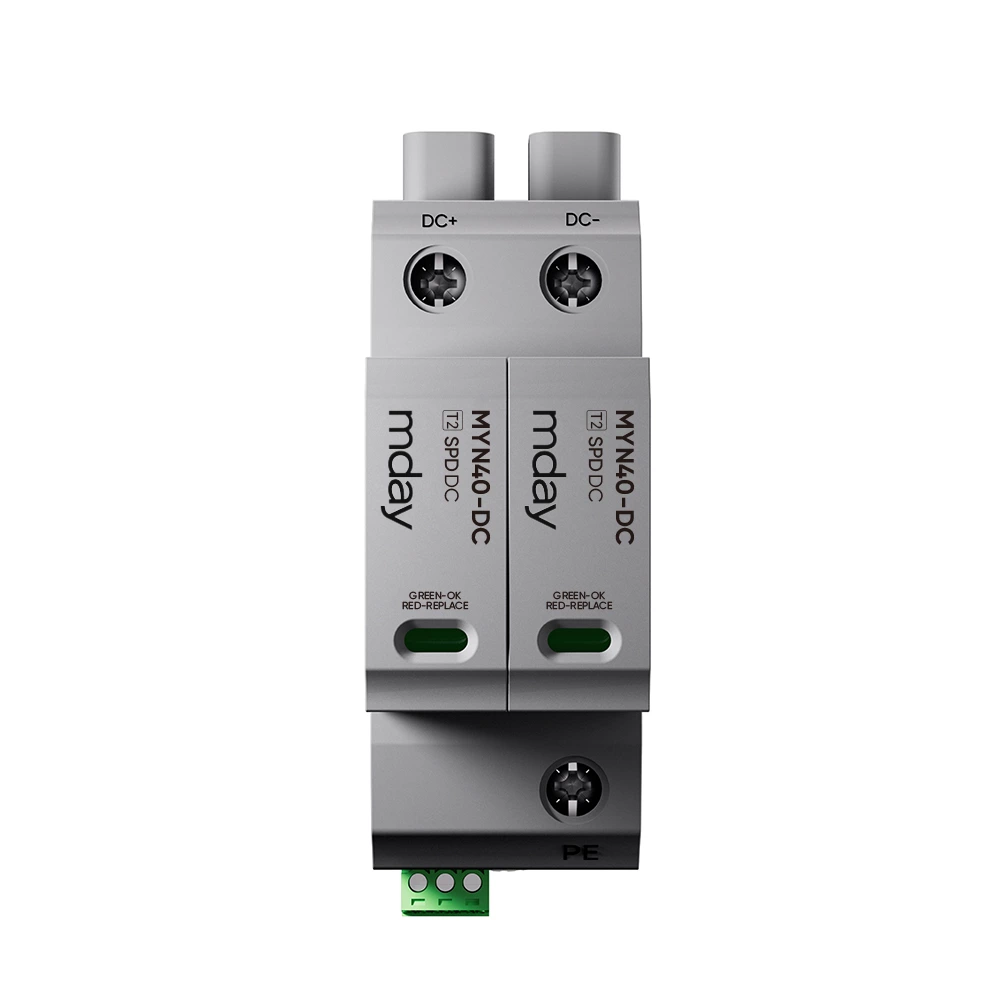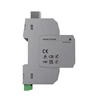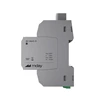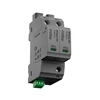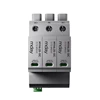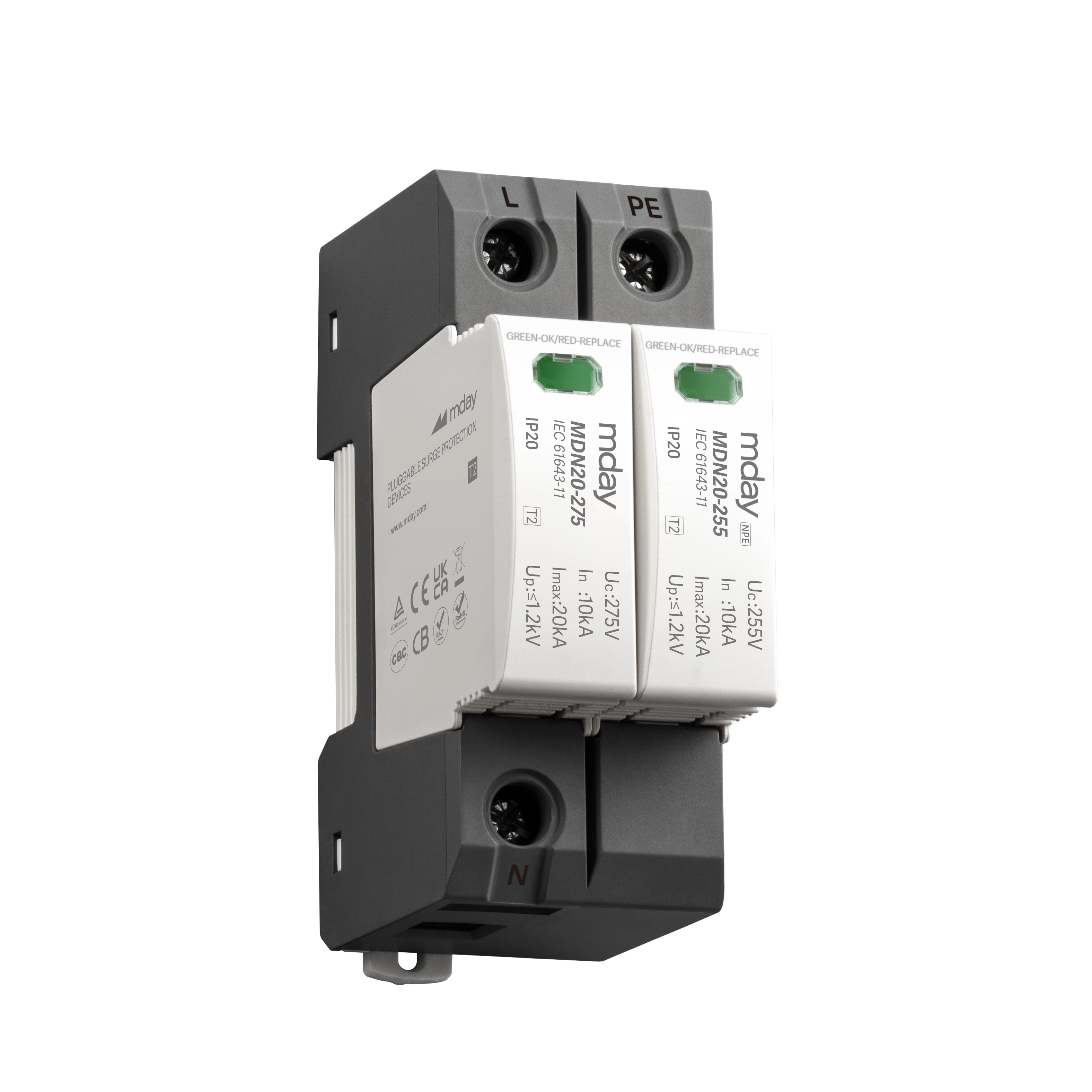How Surge Protector Works - Click To View
Surge protector is a kind of protective device used to protect power systems and equipment from various transient overvoltages (lightning overvoltage and operating overvoltage) and impact current damage. What is the working principle of surge protector?
Mainly explained from the following three aspects:
1. Lightning overvoltage impact form:
In the field of lightning protection, lightning overvoltage is usually divided into direct lightning overvoltage and induced lightning overvoltage. In actual production life, in order to study the characteristics of lightning overvoltage and take measures to protect equipment and buildings from lightning, it is necessary to use certain methods to simulate and test direct lightning overvoltage and induced lightning overvoltage. The simulation of direct lightning and induced lightning uses 10/350us waveform and 8/20us waveform respectively.
2. Lightning waveform characteristics and surge protector core components:
The characteristics of the 10/350us waveform are fast voltage rise and slow decay. The half-peak time is 350us. Compared with the 8/20us waveform, its energy is huge, about 17-21 times that of the 8/20us waveform. Therefore, the T1-level surge protector for direct lightning protection is mainly used to discharge energy, and the core of the surge protector is a switching component, such as a gas discharge tube, a spark gap, etc.
The characteristics of the 8/20us waveform are that the voltage rises and decays very quickly, the energy is small, and the half-peak time is 20us. Therefore, the T2-level surge protector for protection against inductive lightning mainly eliminates spikes and clamps the voltage. The core of the T2-level surge protector is a voltage-limiting component, such as a varistor chip, and the signal system surge protector is mainly a Zener diode.
3. Working principle of gas discharge tube and varistor:
① Gas discharge tube: voltage switching component, because it can withstand longer impacts, it is mainly used in the N-PE protection design of T1-level surge protector or T2-level surge protector.
② Varistor: voltage-limiting component. Due to its special volt-ampere characteristics, it is often used in the design of T2 and T3 level surge protectors.
When the voltage across the varistor is before the critical value, the varistor maintains a high resistance state. When the voltage exceeds the critical value, the voltage across the varistor remains unchanged. Therefore, this characteristic can be used to limit the line voltage to the range that the equipment can withstand when the lightning current arrives, thereby ensuring that the equipment is not damaged.
my country's surge protector industry began to be gradually established in the mid-1980s. By the early 1990s, with the establishment of relevant national meteorological lightning protection and disaster reduction regulations, especially the guidance and implementation of some industry regulations, the domestic surge protector industry has experienced explosive growth in the past 20 years, and domestic surge protector technology and processes have shown a trend of a hundred schools of thought.
With its unique technical background and advantages, Hangzhou Yizao Technology Co., Ltd. has launched an ultra-small surge protector. The core device adopts a fully sealed inner core process, and adds a new main circuit tripping technology and arc isolation technology, making the surge protector more reliable and more beautiful in appearance.
As a safety device, we insist that product safety is always the core of the surge protector. It is connected to the power system equipment. How to ensure that the surge protector does not burn out in a complex voltage system, improve the failure protection function, and improve the reliability and stability of the product itself are our primary concerns.
